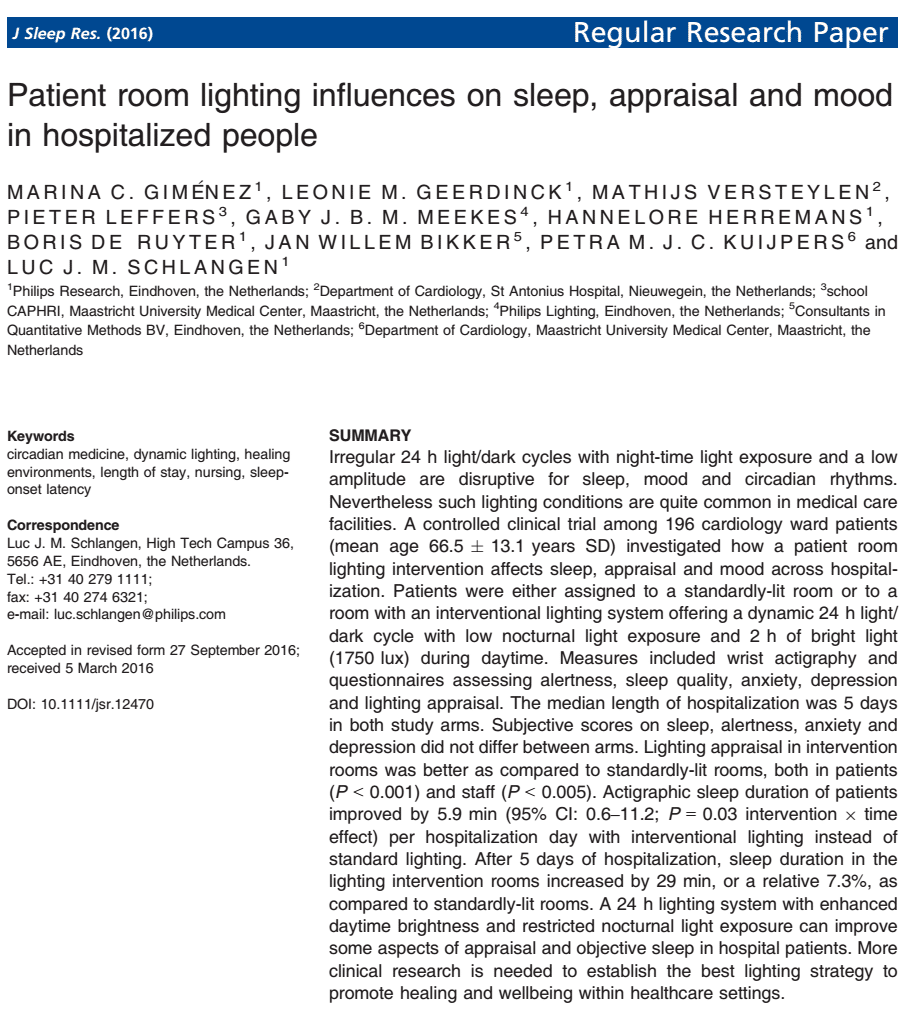
Chrono@Work’s employee Marina Giménez is the first author of a paper describing a study on the effects of a new dynamic room lighting system on sleep of patients admitted to a cardiology ward. Irregular 24 h light/dark cycles with night-time light exposure and a low amplitude are disruptive for sleep, mood and circadian rhythms. Nevertheless, such lighting conditions are quite common in medical care facilities. A controlled clinical trial among 196 cardiology ward patients (mean age 66.5 ± 13.1 years SD) investigated how a patient room lighting intervention affects sleep, appraisal and mood across hospitalization.
Patients were either assigned to a standardly-lit room or to a room with an interventional lighting system offering a dynamic 24 h light/ dark cycle with low nocturnal light exposure and 2 h of bright light (1750 lux) during daytime. Measures included wrist actigraphy and questionnaires assessing alertness, sleep quality, anxiety, depression and lighting appraisal. The median length of hospitalization was 5 days in both study arms.
Subjective scores on sleep, alertness, anxiety and depression did not differ between arms. Lighting appraisal in intervention rooms was better as compared to standardly-lit rooms, both in patients (P < 0.001) and staff (P < 0.005). Actigraphic sleep duration of patients improved by 5.9 min (95% CI: 0.6–11.2; P = 0.03 intervention 9 time effect) per hospitalization day with interventional lighting instead of standard lighting. After 5 days of hospitalization, sleep duration in the lighting intervention rooms increased by 29 min, or a relative 7.3%, as compared to standardly-lit rooms.
A 24 h lighting system with enhanced daytime brightness and restricted nocturnal light exposure can improve some aspects of appraisal and objective sleep in hospital patients. More clinical research is needed to establish the best lighting strategy to promote healing and wellbeing within healthcare settings.
https://www.ncbi.nlm.nih.gov/pubmed/27862514
